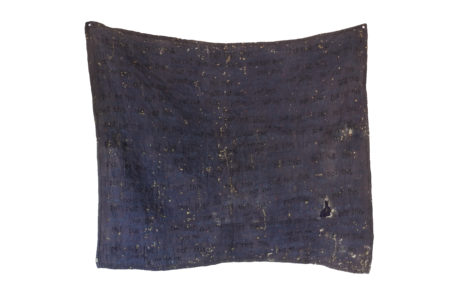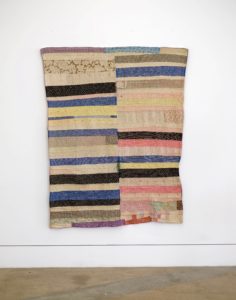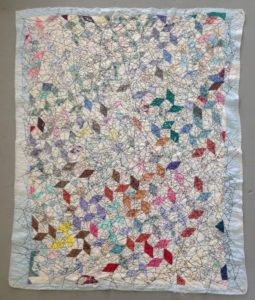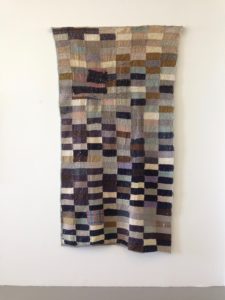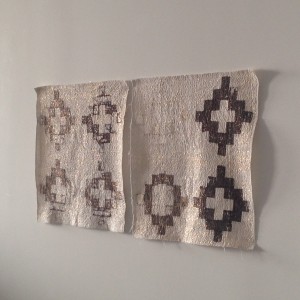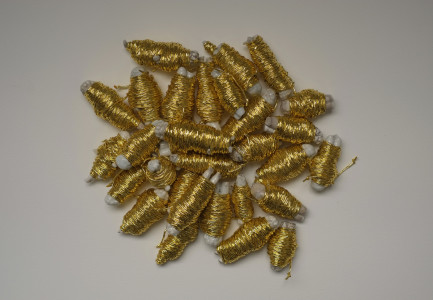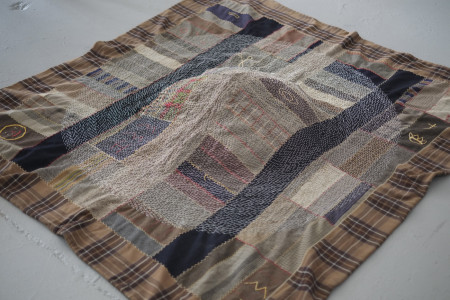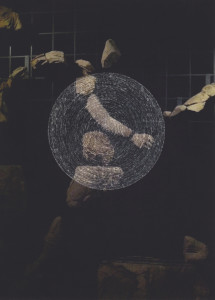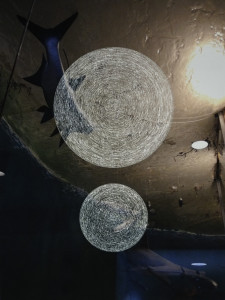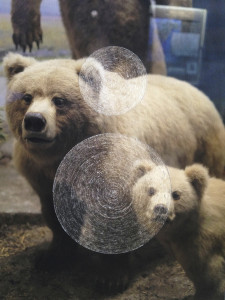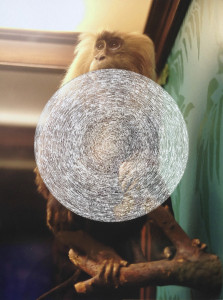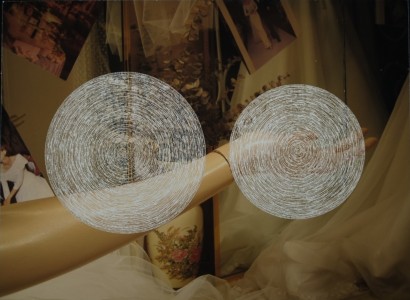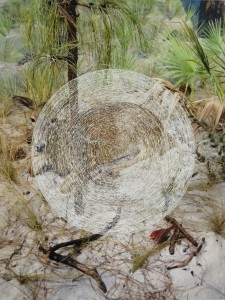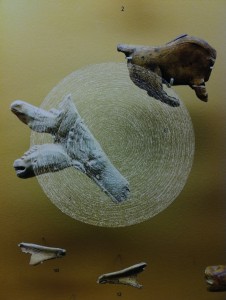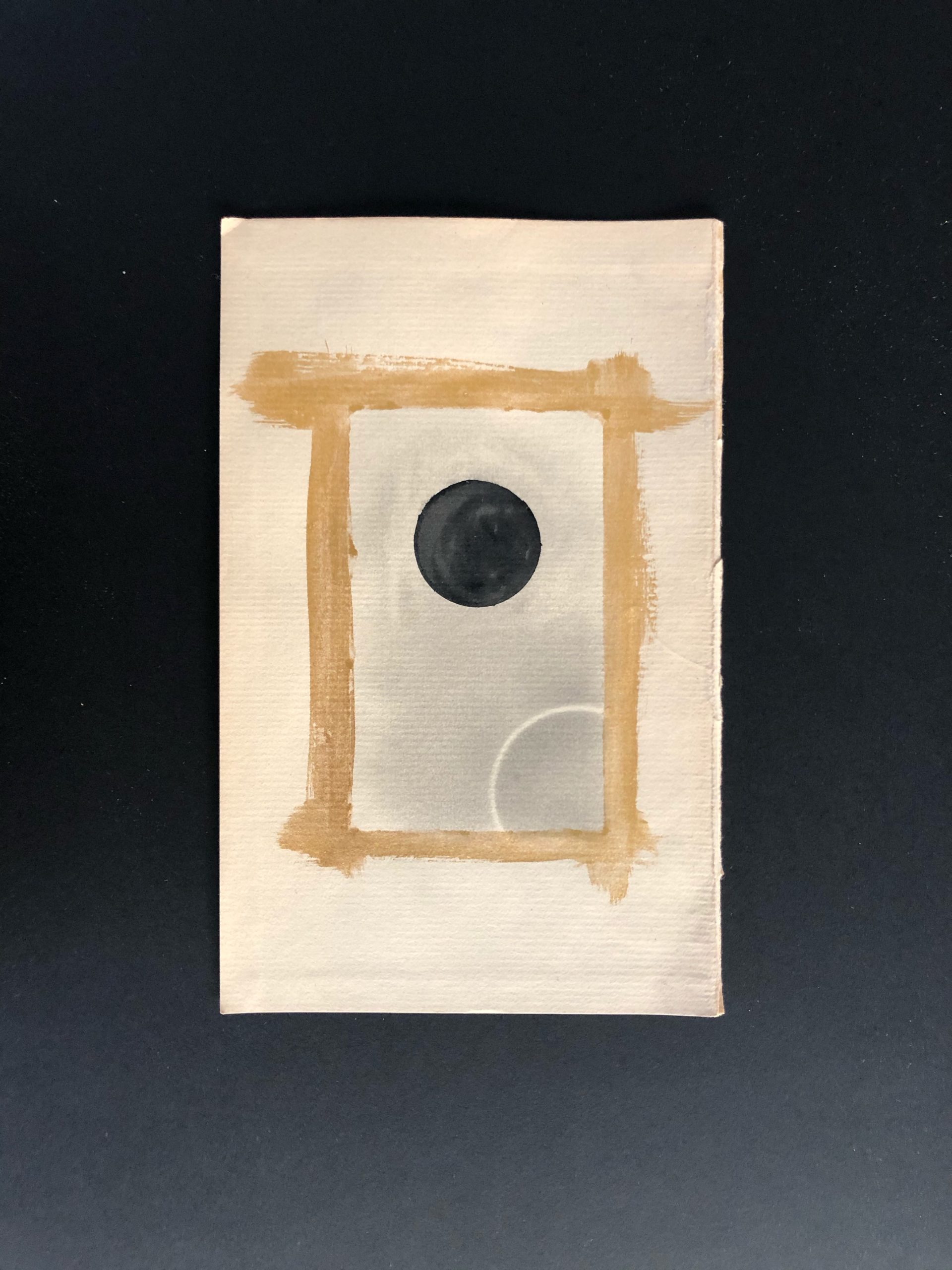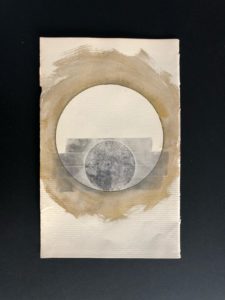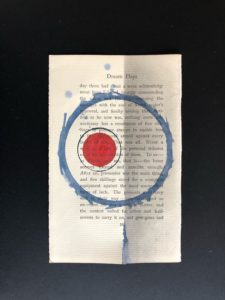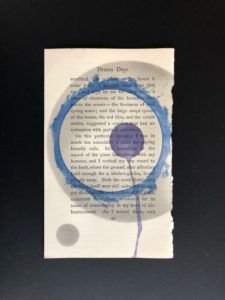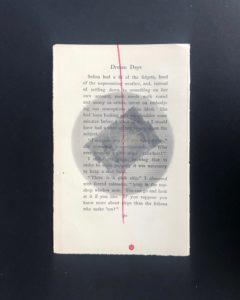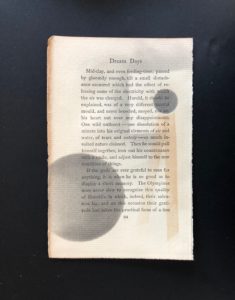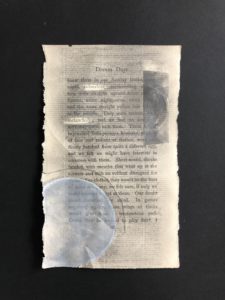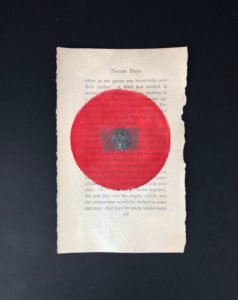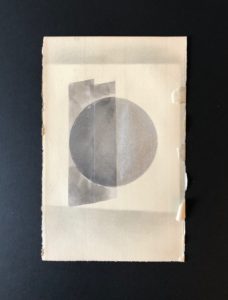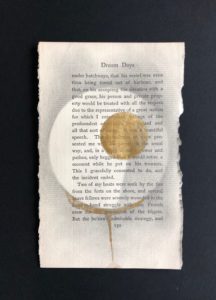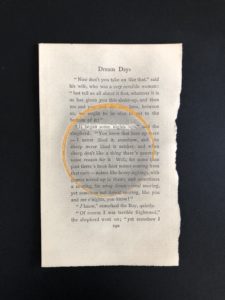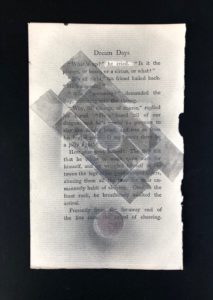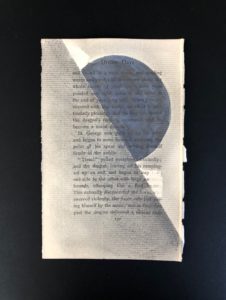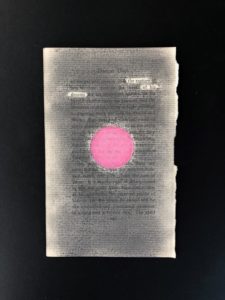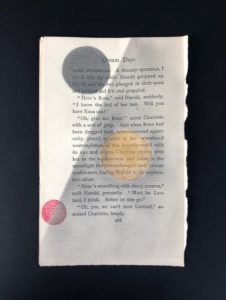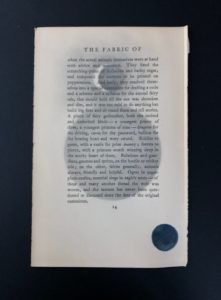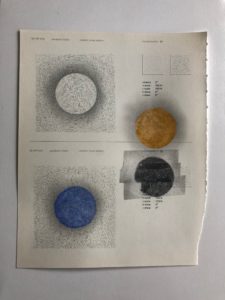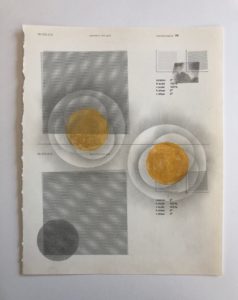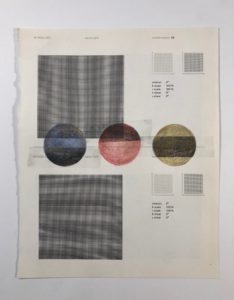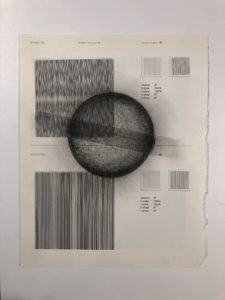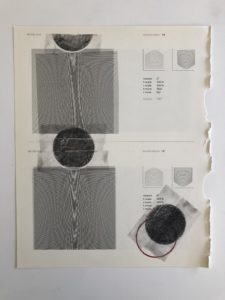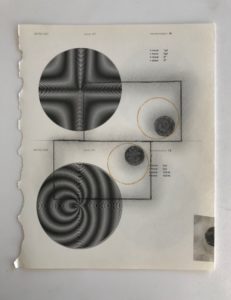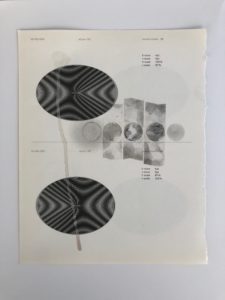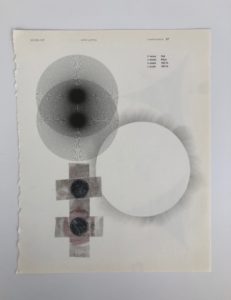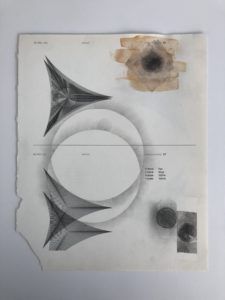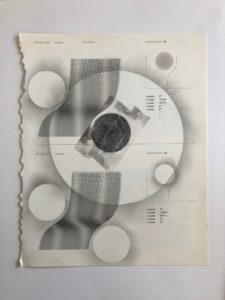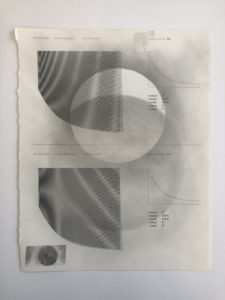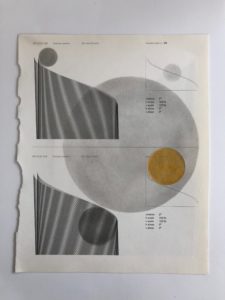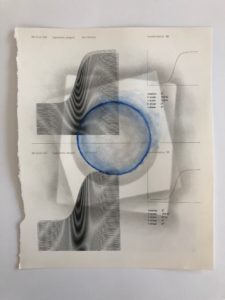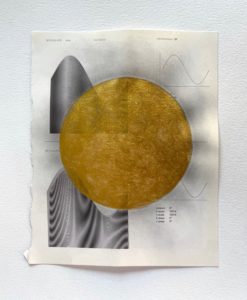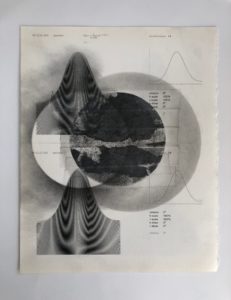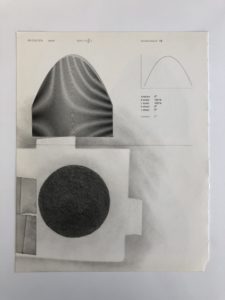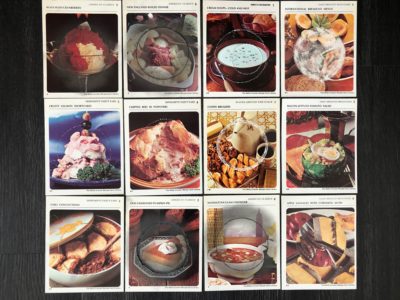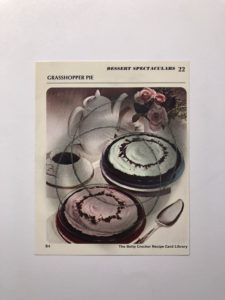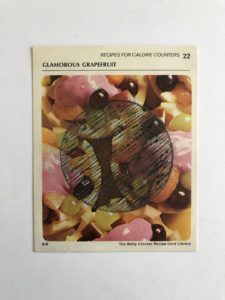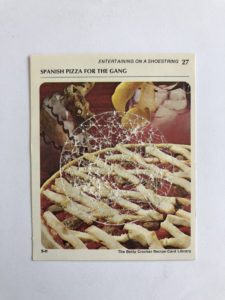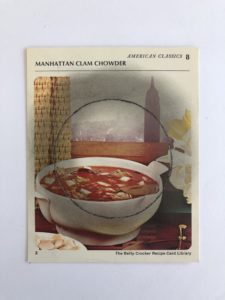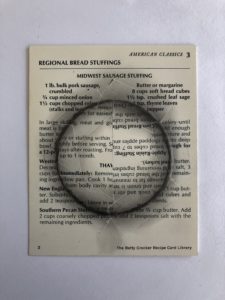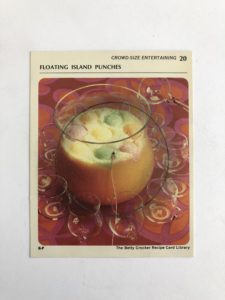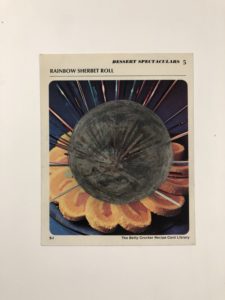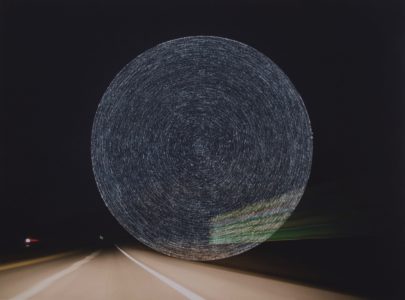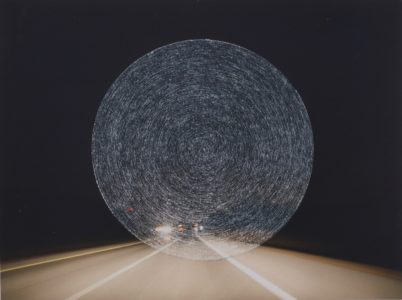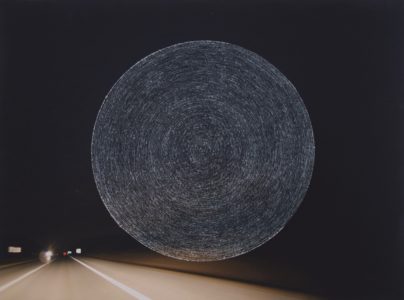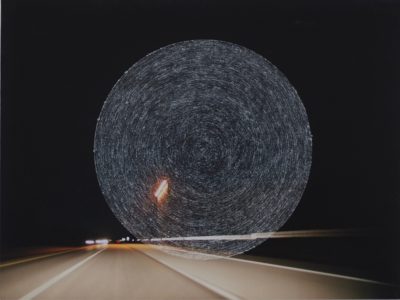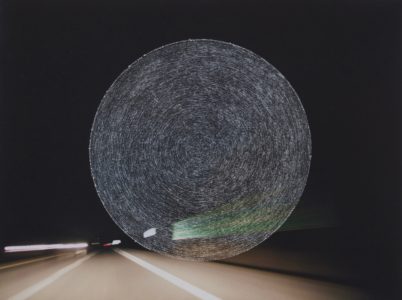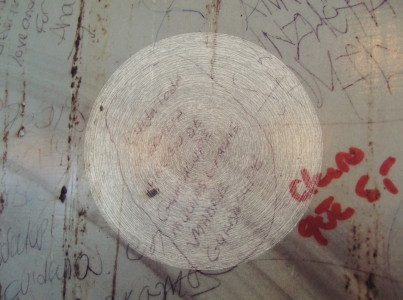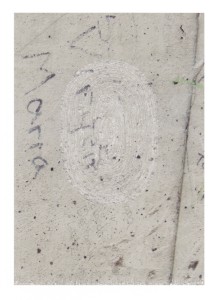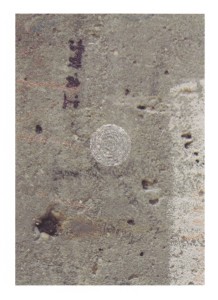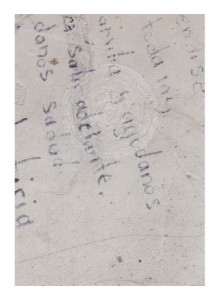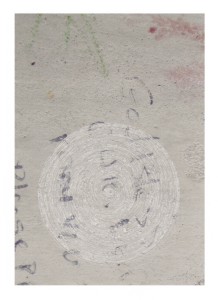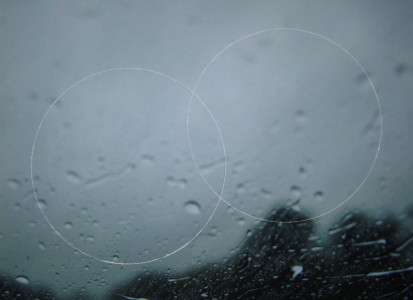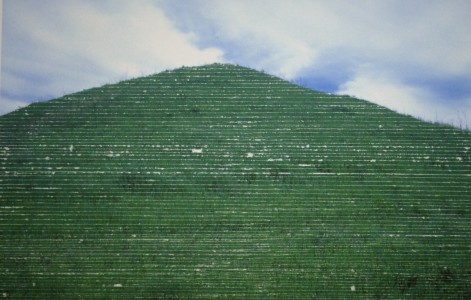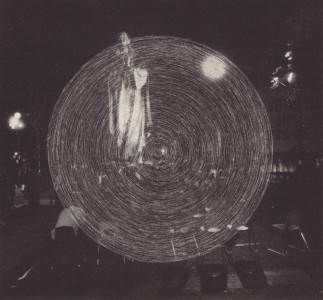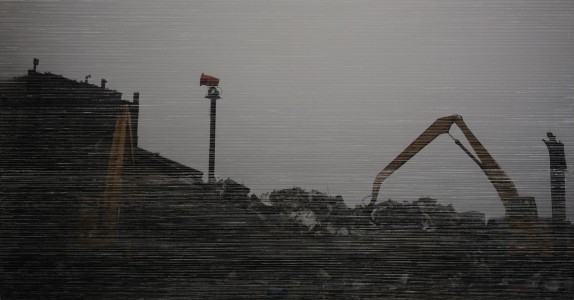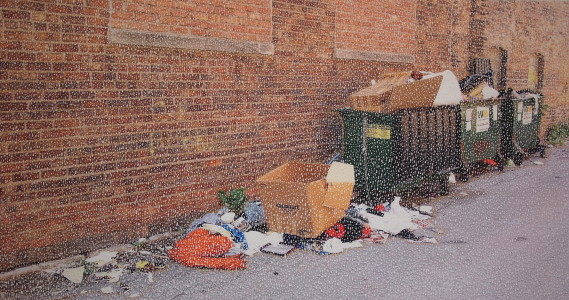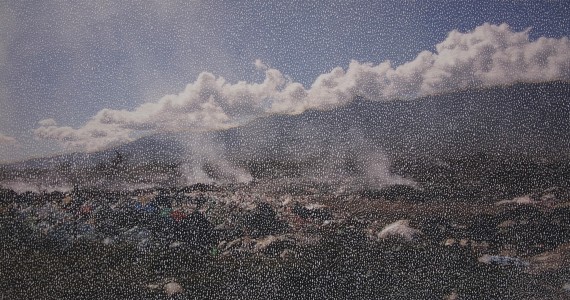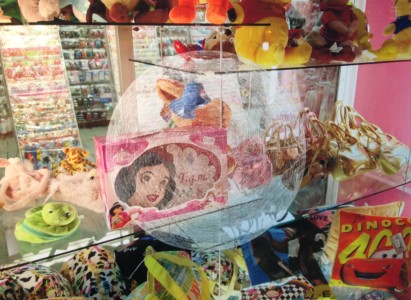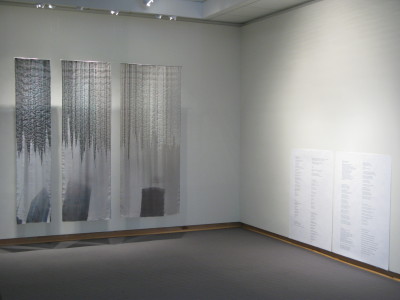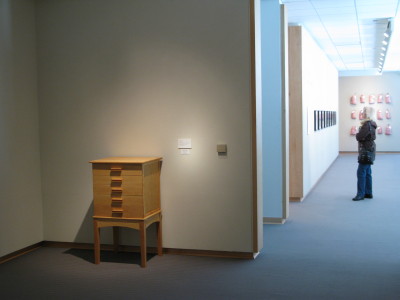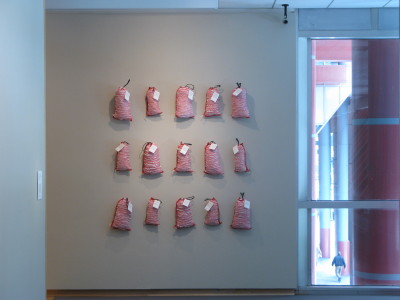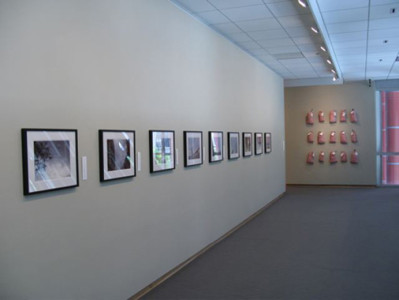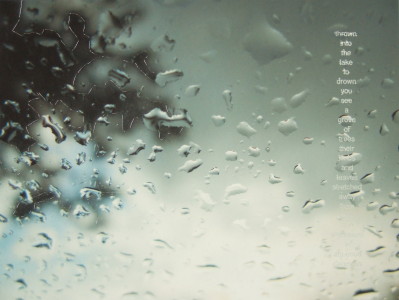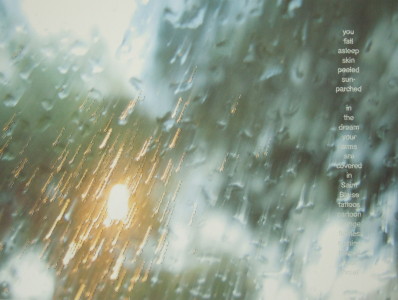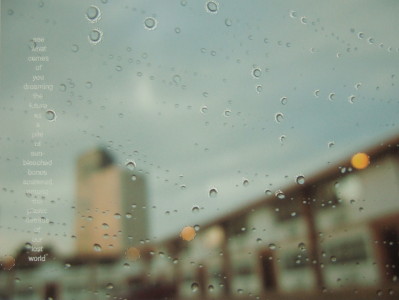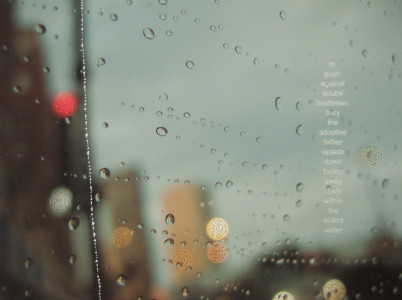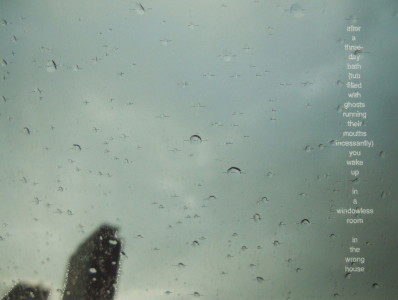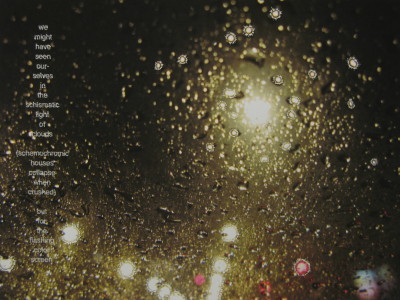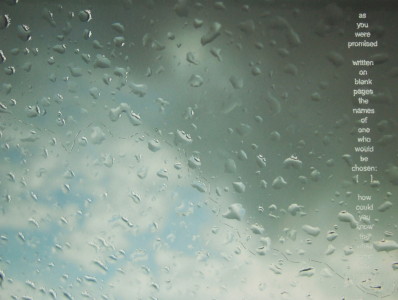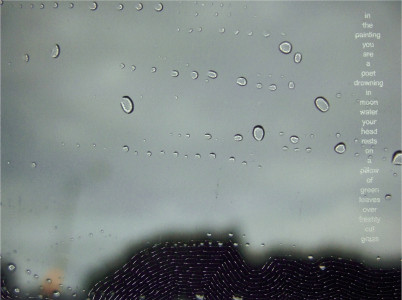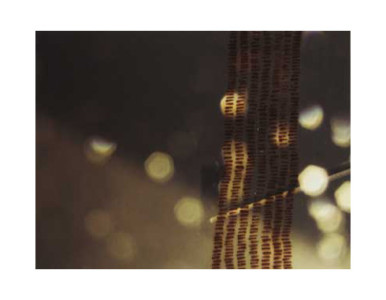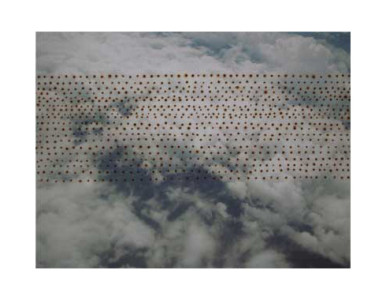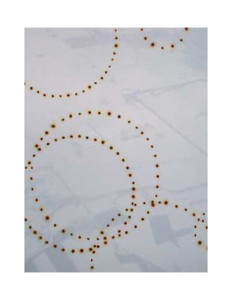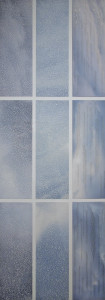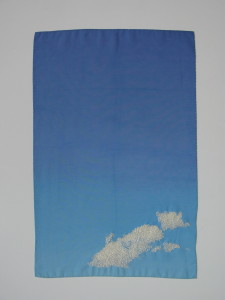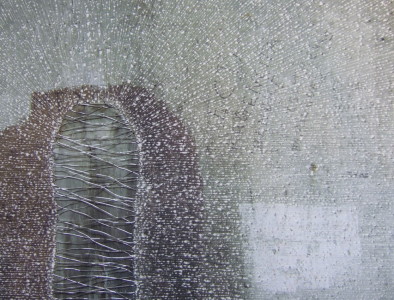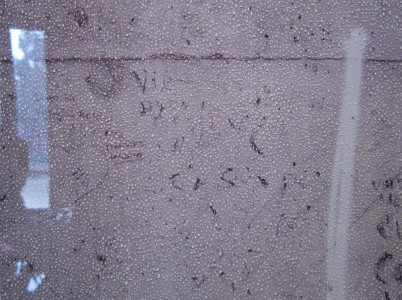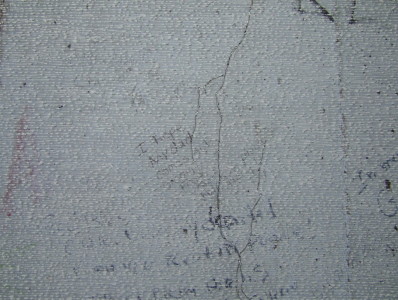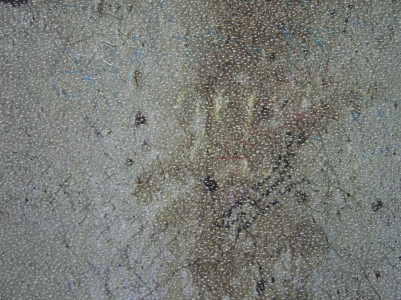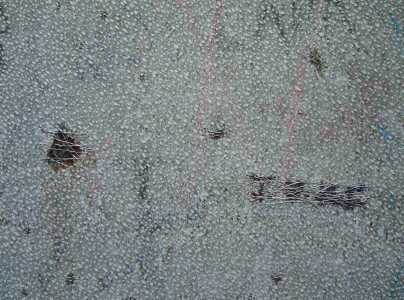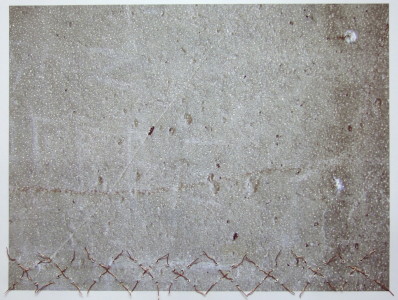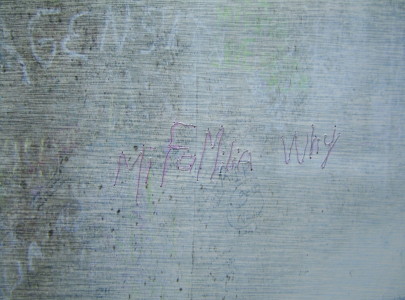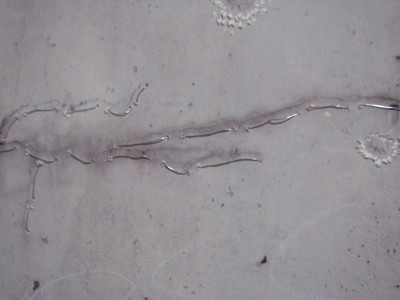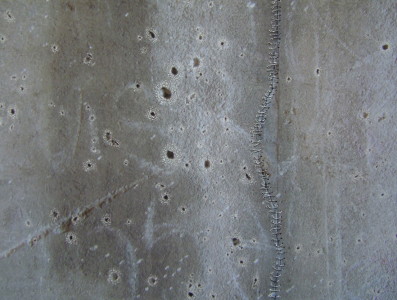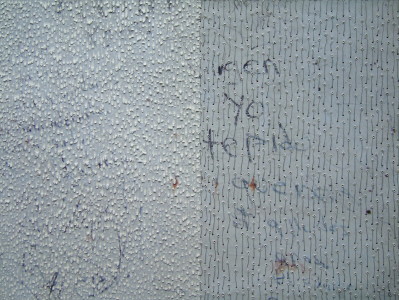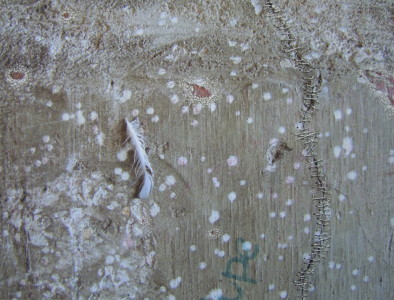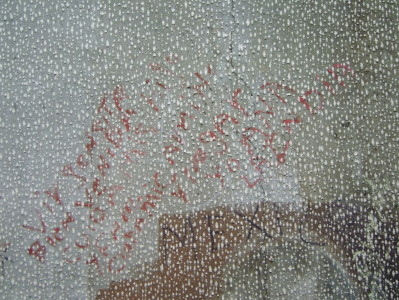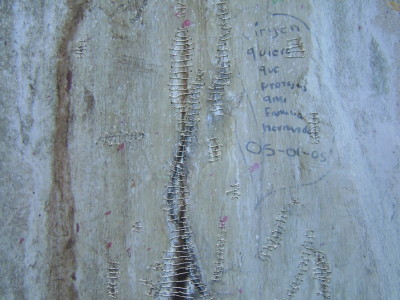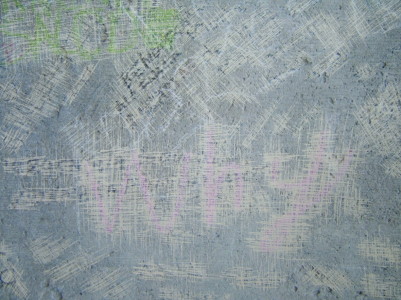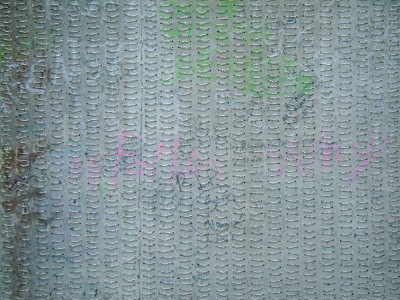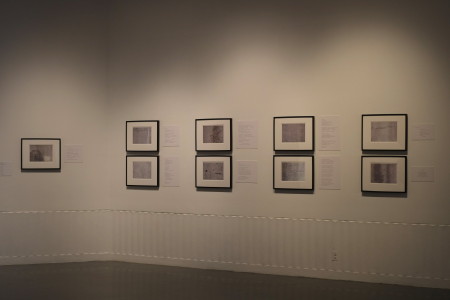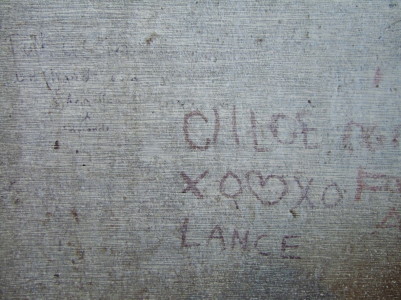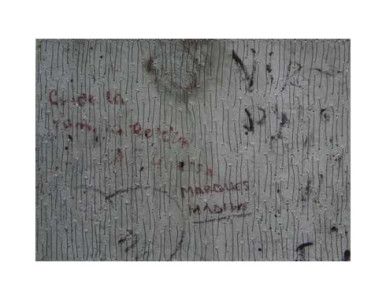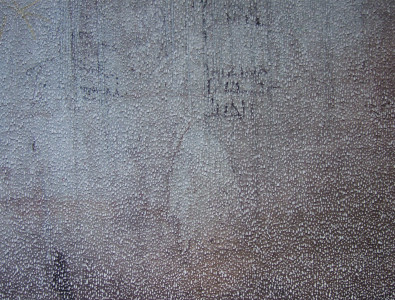KATE INGOLD
IMAGE_TEXT[ILE]
DAMAGED GOODS_SMALL REPAIRS
Damaged Goods_Small Repairs is a multidisciplinary inquiry into tenderness, disintegration, repair, and the body. Touching on aspects of mourning and loss, the work looks at "damaged goods" -- torn and discarded antique quilts (including mourning quilts), broken porcelain figurines and other objects, and taxidermied animals set in dioramas. The series includes photographs, drawings, textiles, sculptural installation, collage and video.
DREAM DAYS
Altered pages from the book, Dream Days, by Kenneth Grahame. Quarantine collage project, 2020.
MOON_MOIRE
Altered pages from Moire Index by Carsten Nicolai. Quarantine project begun on the penumbral eclipse on July 4, 2020.
MEMORY/RECIPE CARDS
Quarantine mail art project, 2020. Altered recipe cards from the 1977 Betty Crocker recipe card set sent to friends, colleagues, and friends of friends. Ongoing project (will be completed when quarantine is over).
HIGHWAY DREAMS
Past the sprouting of the past, the asphalt dreams of waving toward the split of the evening. Basement dreams. Formations form. Birds of the earth fly in celestial formations. Emerge, then, to greet the rising stars sprinkling themselves across your path.
THIS MATERIAL THAT
First inspired by the anonymous paintings in Tantric Song by Franck André Jamme, I began going through "old stock," photos that I printed years ago but decided not to work on, and began scratching and sewing into them to make quiet, contemplative pieces. I'm interested in commodification and consumption, and this series speaks directly to those concerns.
DRUNKEN FOREST
DREAM OF WATER
In Dream of Water, I examine issues of war, ecological destruction, commodification, disturbance, reparation, mutual ascendancy and collapse. In much of the work, I meld the 21st century practice of digital photography with the traditional practice of embroidery. I stitch into paper and work to disturb and destruct the surface with metal tools, and also embroider silk thread over digital images printed on silk fabric. Many of the images are paired with poems. In doing, I am referencing Japanese haiga paintings, illuminated manuscripts, and modernist work involving text and image. I intend to have the image and text come together to form a third work, one that is dependent on the two elements to exist. In 2007, a collection of poems from the series was selected by Harryette Mullen as the winner of the Poetry Society of America’s National Chapbook Fellowship. The chapbook was published in 2008. Work from the series was exhibited at the Illinois State Museum-Chicago Gallery, June 1 to August 7, 2009, curated by Jennifer Jaskowiak. In 2013/14, "Dark Waters" is on view at the Illinois State Museum (Chicago Gallery, then Lockport Gallery and Rend Lake) in "Sketches, Journals and Preparations…Everything in Place," a traveling exhibition about preparatory materials.
DARK WATERS
"Dark Waters (Nine Tankas), in memory of Michael D." was made in response to a friend's suicide. The poem was first published in the chapbook, Dream of Water, which was published by Poetry Society of America in 2008. The piece began as a poem and a collection of photographs, then became an artist book and finally this 9-piece work. "Dark Waters" has been exhibited at Governors State University (2013) and twice at the Illinois State Museum, the first time in 2009 in a solo exhibition, Dream of Water, and again in 2013 as part of a wonderful show on preparatory materials, "Sketches, Journals, Preparations...Everything in Place."
21ST CENTURY RETABLO
Retablo is a direct response to a number of events. In February 2005, my husband was sent to Afghanistan with his national guard unit. He was stationed along the volatile border with Pakistan. He was stop-lossed; that is, he was unable to leave the military when his contract expired, and instead was forced to stay in country until February of the next year. Not more than two months after he left, a young girl “discovered” a Guadalupe made from a water stain on Fullerton Avenue, beneath the highway leading to O’Hare airport. The stain, vaguely shaped like Guadalupe, became a spontaneous religious site as people from across the city came and left flowers, cakes, photos, and messages for her. Soon after she was discovered, a vandal spray-painted a swastika and the words “Big Lie” across the stain. The city, horrified by the swastika, painted over the entire image with brown industrial paint. Within weeks, someone had cleared the paint and the graffiti off of the stain, leaving the brown paint as a halo around her. She had been “resurrected.” I began photographing this water stain Guadalupe in April and continued to throughout the year. The makeshift shrine was scattered among “Emergency Parking Only” signs and whitewashed graffiti markings. A highway grotto. What I photographed most were the messages written on the cracked and damaged concrete wall surrounding her. The wall was a living palimpsest. Every time I returned there were new messages, often written on top of old ones, or around them. I began writing poems in response to the place and having my husband at war, and the marriage of religion and politics that has driven so much conflict. As I printed out the photographs, I began to add my own layer to the photographed palimpsest by scraping and gouging the surface with metal tools and sewing (and often “repairing”) the images with metal wire. While I worked on the visual pieces I simultaneously worked on the poems, with one influencing the other throughout the process.
